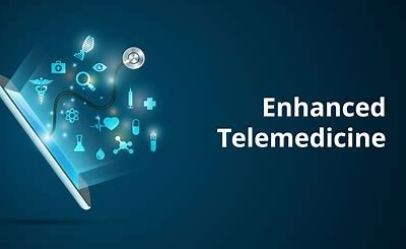Telemedicine and digital health have experienced substantial changes in recent years, propelled by technological advancements and the imperative created by the COVID-19 epidemic. This chapter examines the fundamental advancements, advantages, obstacles, and prospects of telemedicine and digital health.
Telemedicine and Digital Health
Essential Innovations:
1. A distinguished breakthrough in telemedicine is the incorporation of Patient virtual consultations with health practitioners where help will be provided such as diagnostics, orientations, medications and other range of services, as well as emergency care and mental health consultations.
This innovation has enhanced the accessibility of healthcare, specifically for patients living in remote or underdeveloped parts.
2. Remote Patient monitoring (RPM), encompasses the usage of digital tools to gather medical data and its transmission to healthcare providers for examination and implementation.
For example, devices such as smartwatches for heart rate measurements and sensing tools to measure blood sugar for diabetic people
3. Digital Therapeutics: employ software systems to be able to regulate, or avert illnesses. These involvements are grounded on accurate data that could be utilised distinctly or together with traditional treatments.
4. Machine Learning and Artificial Intelligence AI: Telemedicine platforms mix AI and machine learning to improve diagnostic precision, personalise treatment methods, and predict patient health results.
Babylon Health employs artificial intelligence (AI) for health evaluations and assistance through the assessment of patient medical health records and feedback
Benefits
1. Improved Healthcare Accessibility: Telemedicine eliminates geographical limitations, empowering the public in remote and underdeveloped areas to without difficulty access healthcare services. Furthermore, it provides suitable accessibility to those with mobility challenges.
2. Cost-Effectiveness: Telemedicine can minimise the necessity for in-person schedules, subsequently reducing healthcare expenses for patients and providers, whether in transportation, hospitalisation, or personnel.
3. Heightened Patient Engagement: Digital health devices endorse the active involvement of patients in their health management. Smartphone and Wearable device applications could be used as health monitors, medication reminders and educational materials providers.
4. Continuousness of Care: Telemedicine enables the continuous delivery of healthcare through recurrent check-ins and follow-ups, which are indispensable for the management of lasting illnesses and post-operative recovery.
Challenges
1. Legal and Regulatory Concerns: The swift development of telemedicine has exceeded the establishment of regulatory frameworks. Licensing, patient privacy and reimbursement are still to be a huge issue.
2. Technological barriers: some patients can not use telemedicine due to lack of the necessary resources, or online access or are not computer literate.
3. Data Security and Confidentiality: the protection and privacy of patient information. The propagation of electronic health records has highlighted concerns about unauthorised access and potential privacy breaches.
4. Care Quality: There are some concerns regarding the quality of care in contrast to physical consultations as in some cases, physical diagnostics might be vital, and necessary rather than conducted by telemedicine
Future Directions
- The integration of Telemedicine with healthcare services is projected to accompany it permanently, becoming the standard. The prospect of fusion models, which are associated with virtual care and in-person.
- Heightened Interoperability: Present endeavours are concerted on refining the interoperability and smooth, and all–in–one integration of diverse telemedicine systems with electronic health records (EHRs). This will update the unified transfer of patient information and improve the harmonisation and collaboration of healthcare providers.
- Service Development: Telemedicine services are expanding their space to incorporate specialised arenas like cardiology, psychiatry, and dermatology. This extension will bring an extensive assortment of healthcare selections for patients, and assurances of full and wide-ranging levels of treatment.
- Innovative Payment Procedures: Developing transactional payment systems, with value-based care, is being discovered to deliver reasonable equitable payment for telemedicine services. These models emphasise patient results over the number of services obtainable.
Conclusion
Digital Health and Telemedicine characterise a noteworthy alteration in the establishment of healthcare. The development in this sphere can expand the approachability, effectiveness, and centred patient healthcare. However, it is vital to challenge the barriers connected to technology, quality of care, and policy to successfully benefit from the advantages of these progressions. The possible applications of telemedicine will increase with technological developments, henceforth enabling a supplementary solid and knowledgeable healthcare system.
